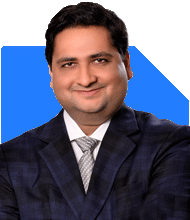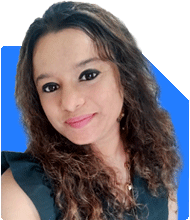45, single, 33k salary: How to get 50k passive income?
Ramalingam Kalirajan |10906 Answers |Ask -Follow
Mutual Funds, Financial Planning Expert - Answered on Aug 08, 2024
He has an MBA in finance from the University of Madras and is a certified financial planner.
He is the director and chief financial planner at Holistic Investment, a Chennai-based firm that offers financial planning and wealth management advice.... more

Sir, I am 45, single .Monthly salary 33k. 5000k monthly SIP in Mutual fund is going on from 2 years ago. 5L lumpsum invested in mutual fund 2 months ago. FD 10 L . I'd like to get 50k per month from passive income. Please advise.
Age: 45
Single
Monthly salary: Rs. 33,000
Monthly SIP: Rs. 5,000 in Mutual Funds (started 2 years ago)
Lumpsum investment: Rs. 5 lakh in Mutual Funds (invested 2 months ago)
Fixed Deposit: Rs. 10 lakh
You aim to get Rs. 50,000 per month from passive income. This requires a strategic approach.
Income from Mutual Funds
Benefits of Actively Managed Funds
Professional management
Potential for higher returns
Diversification
SIP Continuation
Keep your Rs. 5,000 SIP ongoing.
Gradual and disciplined investment
Helps in rupee cost averaging
Additional SIPs
Increase your SIP amount if possible.
Channel more of your savings into SIPs.
Lumpsum Investment
Invest in actively managed funds.
Regular monitoring by fund managers
Fixed Deposits (FD)
Current FD Investment
Rs. 10 lakh in FD
Provides safety but low returns
Recommendations
Reallocate some FD funds to debt mutual funds.
Debt mutual funds offer better returns than FDs.
Maintain a balance between safety and returns.
Generating Passive Income
Dividend Paying Mutual Funds
Invest in funds that pay regular dividends.
Choose funds with a good track record.
Systematic Withdrawal Plan (SWP)
Opt for SWP from your mutual fund investments.
Regular monthly income
More tax-efficient than FD interest
Hybrid Mutual Funds
Invest in hybrid funds (balanced funds).
Combination of equity and debt
Potential for steady returns
Conservative Debt Funds
Invest part of your funds in conservative debt funds.
Lower risk compared to equity
Steady income
Portfolio Diversification
Equity Funds
Continue investing in equity funds for growth.
Diversified portfolio to reduce risk
Debt Funds
Allocate more to debt funds for stability.
Balance between equity and debt
Rebalancing
Regularly rebalance your portfolio.
Ensure the right mix of equity and debt
Financial Planning Tips
Emergency Fund
Keep an emergency fund.
At least 6 months of expenses
Use liquid funds or savings account
Retirement Planning
Plan for retirement early.
Invest in long-term instruments
Start PPF or NPS for retirement corpus
Health Insurance
Ensure adequate health insurance.
Cover medical emergencies
Avoid dipping into savings
Additional Considerations
Professional Advice
Consult a Certified Financial Planner.
Tailored advice for your situation
Regular reviews and updates
Avoid Direct Funds
Direct funds require more involvement.
Regular funds offer professional advice
Easier to manage with a Certified Financial Planner
Avoid Index Funds
Index funds track the market.
Lower potential for high returns
Actively managed funds have better prospects
Final Insights
Passive Income Goal
Achieving Rs. 50,000 monthly requires a well-planned approach.
Diversify your investments.
Balance between growth and stability
Long-Term Focus
Focus on long-term goals.
Regular monitoring and rebalancing
Consult a Certified Financial Planner
Continued Learning
Stay updated with market trends.
Regularly review your financial plan
Adjust as needed
Best Regards,
K. Ramalingam, MBA, CFP,
Chief Financial Planner,
www.holisticinvestment.in
You may like to see similar questions and answers below
Hardik Parikh | Answer |Ask -Follow
Tax, Mutual Fund Expert - Answered on Apr 11, 2023
Jinal Mehta | Answer |Ask -Follow
Financial Planner - Answered on Mar 18, 2024
Ramalingam Kalirajan |10906 Answers |Ask -Follow
Mutual Funds, Financial Planning Expert - Answered on May 20, 2024
Ramalingam Kalirajan |10906 Answers |Ask -Follow
Mutual Funds, Financial Planning Expert - Answered on Jul 17, 2024
Ramalingam Kalirajan |10906 Answers |Ask -Follow
Mutual Funds, Financial Planning Expert - Answered on Jul 25, 2024
Ramalingam Kalirajan |10906 Answers |Ask -Follow
Mutual Funds, Financial Planning Expert - Answered on Dec 19, 2025
Nayagam P P |10859 Answers |Ask -Follow
Career Counsellor - Answered on Dec 19, 2025
Ramalingam Kalirajan |10906 Answers |Ask -Follow
Mutual Funds, Financial Planning Expert - Answered on Dec 19, 2025
Ramalingam Kalirajan |10906 Answers |Ask -Follow
Mutual Funds, Financial Planning Expert - Answered on Dec 19, 2025
Ramalingam Kalirajan |10906 Answers |Ask -Follow
Mutual Funds, Financial Planning Expert - Answered on Dec 19, 2025
Radheshyam Zanwar |6751 Answers |Ask -Follow
MHT-CET, IIT-JEE, NEET-UG Expert - Answered on Dec 19, 2025
Radheshyam Zanwar |6751 Answers |Ask -Follow
MHT-CET, IIT-JEE, NEET-UG Expert - Answered on Dec 19, 2025
Samraat Jadhav |2514 Answers |Ask -Follow
Stock Market Expert - Answered on Dec 18, 2025
Reetika Sharma |432 Answers |Ask -Follow
Financial Planner, MF and Insurance Expert - Answered on Dec 18, 2025
Reetika Sharma |432 Answers |Ask -Follow
Financial Planner, MF and Insurance Expert - Answered on Dec 18, 2025

























